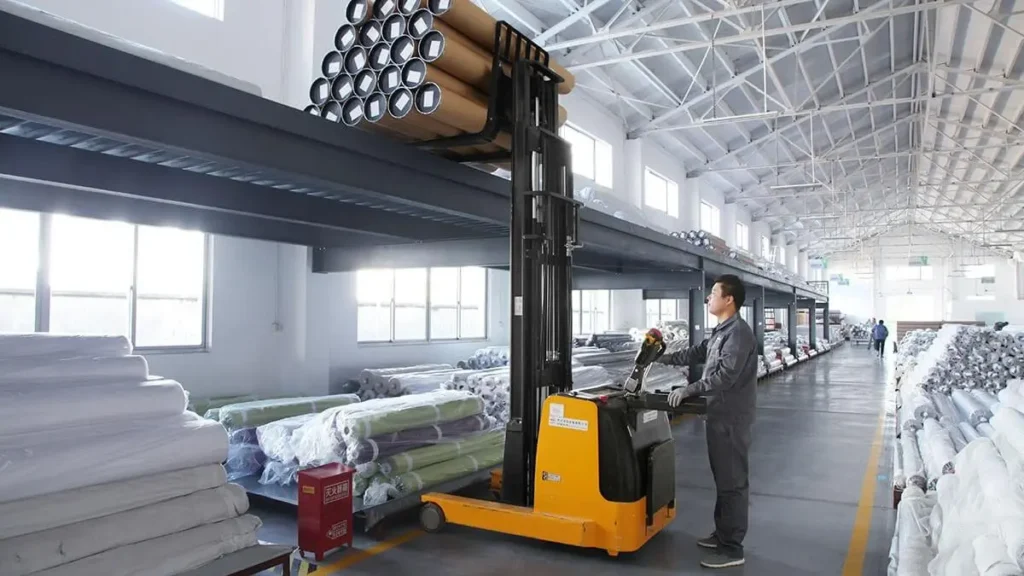Buying large amounts of window blinds can be tricky. It can cause problems like delays, unexpected costs, and quality issues. But with the right plan, you can avoid these problems easily.
Ordering many blinds for a big project needs careful thought. You need to think about quality, delivery, customization, cost, and long-term support to make sure everything goes smoothly and your projects stay on budget.
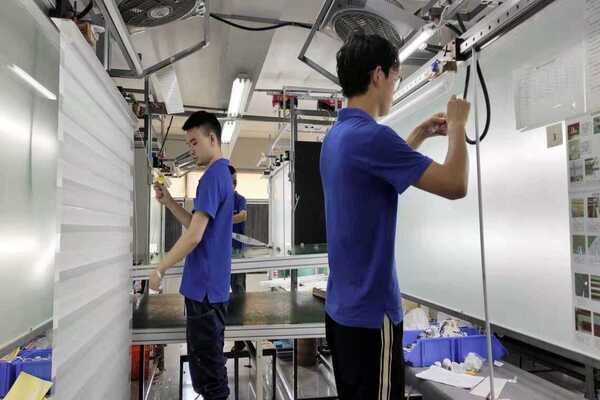
I remember when I first started in this industry. I thought ordering in bulk was just about getting a good price. I quickly learned that there is much more to it than that. This involves planning and working with the right partners. This guide will help you understand every important part of ordering many window blinds.
What are the key factors for ensuring quality and consistency across a large blind order?
Getting many blinds that all look and work the same can be hard. Issues like color differences or parts not fitting can pop up. This can slow down your project and make your clients unhappy.
Ensuring high quality and consistency for bulk blind orders means focusing on standardized manufacturing processes, strict quality control at every stage, and clear material specifications to guarantee uniform appearance and function across all units.
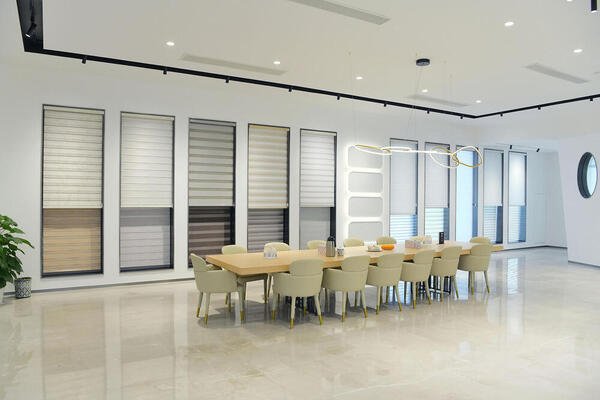
When I work on a big project, I always prioritize consistency. I know that even a small difference in color or shade operation can stand out. This is why I always check the manufacturing process. I also check the quality control measures put in place by my suppliers. This helps me ensure that every blind delivered meets the same high standard.
How to ensure all your blinds are the same?
Consistency in bulk orders is very important. It means every blind must meet the same standards. This includes how it looks and how it works. I always push for several key things. This helps guarantee uniformity.
- Standardized Manufacturing Practices: I look for suppliers who follow strict manufacturing rules. This means every step in making the blinds is the same. This includes cutting materials and assembling parts. When processes are standardized, it reduces errors. It makes sure each blind is made the same way. This helps maintain consistent quality and appearance throughout the entire order.
- Quality Control Checkpoints: A good supplier has many checks during production. They inspect materials when they arrive. They check parts during assembly. They also check finished blinds before shipping. These checks catch problems early. This prevents defective blinds from reaching the site. This ensures all blinds meet the required quality.
- Material Specification and Sourcing: I make sure the materials used are exactly what I asked for. This means the fabric, hardware, and motorized parts. They all must come from approved sources. This prevents differences in color. It also prevents differences in texture or performance. Using carefully chosen materials ensures every blind performs as expected.
I also focus on what happens after the blinds are made. I make sure to do the following:
| Aspect | Why it matters for consistency | How I approach it |
|---|---|---|
| Color Matching | Small color differences are very noticeable in large installations. | I ask for samples from the actual production batch. I compare these under different lighting conditions to ensure an exact match for the whole order. |
| Dimensional Accuracy | Even tiny size errors can cause installation problems or gaps. | I provide very precise measurements for each blind. I ask for confirmation that production tolerances are very tight, guaranteeing a perfect fit. |
| Operational Uniformity | All motorized blinds must operate at the same speed and sound level. | I specify exact motor types and operational parameters. I test a few units on arrival to verify that all blinds raise and lower smoothly and quietly. |
By doing all these things, I feel confident that all the blinds in my large order will be consistent. They will all look great and work perfectly.
How can I streamline the ordering and delivery process for numerous units?
Ordering many blinds can be a big headache. I have faced problems like wrong shipments, late deliveries, and messy logistics. These issues can really throw a project off track and cost money.
To streamline the ordering and delivery of many blinds, you must use a supplier with efficient logistics, clear communication channels, and precise inventory management. This includes detailed packing lists, coordinated shipping schedules, and dedicated account support to ensure timely and accurate delivery for every unit.
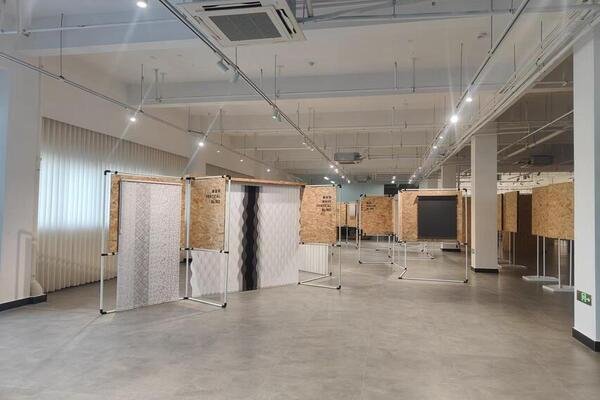
I remember one time a shipment of blinds for a large hotel project was delayed by weeks. It ended up pushing back the entire installation schedule. This taught me a lot about the importance of a smooth ordering and delivery process. I now make sure my suppliers have strong logistical plans and communicate clearly every step of the way. This saves me a lot of stress.
How do you make bulk blind orders easy to manage?
Handling orders for many blinds effectively is essential. It prevents project delays and reduces stress. I focus on making the entire process as easy as possible. This involves several key steps.
- Centralized Communication: I work with suppliers who offer one main point of contact. This person handles all my order details. This avoids confusion. It ensures all my questions and changes go to the right person. This makes communication clear and fast.
- Detailed Order Specifications: I provide very clear and complete order details upfront. This includes exact measurements, material choices, and any special features. I also note specific delivery needs. This helps prevent misunderstandings later. It makes sure the order is made to my exact needs.
- Robust Logistics and Shipping: I only choose suppliers with proven experience in handling large shipments. I look for those who use trusted carriers and provide tracking. I also ensure they can manage complex delivery schedules. This helps coordinate with installation teams. This ensures blinds arrive on time and in good condition.
I also focus on proactive planning. This ensures smooth execution:
| Aspect | Why it helps streamline the process | My best practice |
|---|---|---|
| Staged Deliveries | Receiving too many blinds at once can create storage problems on site. | I arrange deliveries in stages, aligning them with the installation schedule of different project phases. This manages space and avoids clutter. |
| Barcoded Packaging | Quickly identifying specific blinds is hard without clear labels. | I request each individual blind package be labeled with project codes, room numbers, or floor levels. This makes sorting and installation much faster. |
| Pre-Installation Checks | Discovering damaged or incorrect blinds during installation causes delays. | I perform a quick check of a few blind packages upon arrival (if possible). This ensures no major issues exist before full installation begins. |
By putting these practices into place, I make sure the ordering and delivery of hundreds of blinds is efficient. It also helps it be free of major problems.
What customization options are available for bulk blind purchases, and how do they impact project timelines?
My projects often need blinds that fit unique designs. This can mean special sizes, colors, or smart home connections. Finding a supplier that handles these needs without causing long delays is very important to me.
Many customization options are available for bulk blind purchases, including bespoke sizing, specific fabric choices, custom colors, and advanced motorization for smart home integration. These impact project timelines by requiring more detailed planning and potentially longer manufacturing lead times, so communicating needs early is crucial.

I once worked on a boutique hotel where every room had a unique shape. This meant every window needed a different custom blind. Early in my career, I found that complex customizations could quickly delay a project. I learned to talk about specific needs very early in the planning phase. I now make sure the supplier understands all my customization requirements from the start.
How do you choose the right custom blinds?
Customizing blinds for large projects lets me create unique, perfect spaces. But I must be careful. Customization can take more time. I always make sure to discuss my needs with the supplier very early.
- Fabric and Material Selection: I choose fabrics that match my design goals. I also consider their function. This includes light blocking and energy saving. I coordinate with the supplier to ensure enough material is available for large orders. This prevents unexpected delays.
- Motorization and Smart Home Integration: I often need many motorized blinds. These blinds must work with smart home systems. I specify the exact motors and controls needed. I also make sure they are compatible with the client's preferred system. This ensures seamless integration.
- Component and Hardware Finishes: Details matter. I select hardware finishes that match the interior design. This ensures a consistent look. I confirm that the chosen finishes are available in large quantities. This is important for project timelines.
I also consider how different customization choices impact the schedule:
| Customization Option | Typical Impact on Timeline | How I manage it |
|---|---|---|
| Non-Standard Sizes | Requires custom cutting and assembly, adding 1-2 weeks. | I provide precise measurements early. I get production drawings for approval before manufacturing starts. |
| Custom Color Matching | Might need special fabric dyeing, adding 2-4 weeks for sample approval and production. | I submit color samples or Pantone codes at the very beginning. I approve initial swatches before full production begins. |
| Advanced Motorization | Integrating complex smart home systems can add 1-3 weeks for testing and programming. | I share smart home system specifications with the supplier. I work together to confirm compatibility and test a few prototype units if possible. |
| Unique Fabric Sourcing | If a specific fabric is rare, it can add 4-6 weeks for procurement. | I explore alternative but similar fabrics with the supplier. I get client approval if the exact fabric is not readily available. |
By carefully managing these customization options, I deliver unique window coverings. I also keep my projects on schedule.
How do I accurately estimate costs and manage budgets for large-scale window covering projects?
Budgeting for large blind orders can be complex. There are often hidden costs. Things like unexpected shipping fees or price changes can pop up. This can really mess up my project budget.
Accurately estimating costs and managing budgets for large-scale window covering projects requires transparent pricing from suppliers, detailed quotes that include all potential fees, and a clear understanding of material costs, labor, and installation services. Setting aside a contingency budget and tracking expenses closely are also vital for staying on track.

I once had a project where the initial quote for blinds seemed reasonable. But then, extra charges for customs and special packaging appeared. This put a lot of pressure on my budget. This situation taught me to ask many questions. I now demand a very detailed quote upfront. I want to make sure I know every single cost involved.
How do you calculate costs for many blinds?
Managing the budget for a big blind order needs careful planning. I make sure to cover all costs. This helps avoid surprises. I do this by focusing on clear pricing and thorough financial checks.
- Detailed Quotation Breakdown: I ask the supplier for a very clear quote. This quote should list each cost separately. This includes the price per blind. It also includes costs for customization, shipping, and any installation support. This helps me understand exactly what I am paying for.
- Understanding Bulk Discounts: I negotiate for discounts on large orders. I make sure these discounts are applied correctly to the final price. I also check for any volume tiers. This helps me get the best value for my project.
- Freight and Logistics Costs: Shipping many blinds can be expensive. I get clear estimates for all transport costs. This includes international shipping (if needed), customs duties, and local delivery fees. I also check for any special handling charges. This ensures I account for all delivery expenses.
I also pay close attention to potential hidden costs and changes:
| Cost Item | What to look out for | My management strategy |
|---|---|---|
| Installation Fees | Often quoted separately or by a third party. | I clarify if installation is included and get a firm quote beforehand. If not, I factor in external installer costs and coordination. |
| Warranty and Service | Some warranties might have hidden costs for call-outs or parts. | I review the warranty details carefully. I understand what is covered and for how long. I also look for any exclusions or service fees. |
| Storage Costs | If blinds arrive before the site is ready, storage may be needed. | I plan deliveries to align with installation. If early arrival is unavoidable, I get quotes for temporary storage beforehand. |
| Contingency Budget | Unexpected issues always arise, consuming budget. | I always allocate an extra 5-10% of the total budget as a contingency. This covers unforeseen costs like minor repairs or expedited shipping. |
By being very thorough with costs, I keep my large blind projects within budget. I also avoid any financial surprises.
What long-term support and warranty considerations are essential for bulk blind investments?
After installing many blinds, I worry about problems that might come up later. Things like motor failures or fabric fading could happen. Not having good support or a strong warranty could mean huge repair costs and unhappy clients.
Long-term support and warranty are essential for bulk blind investments. Look for comprehensive warranties covering products and motorization for several years. Ensure the supplier offers responsive technical support, readily available spare parts, and clear service agreements for any future maintenance or repairs, protecting your significant investment.
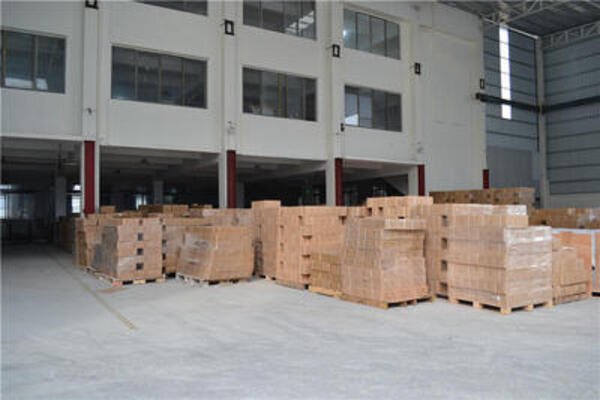
I once had an issue with a batch of motorized blinds where the motors all stopped working after two years. The supplier originally had a short warranty. This made replacing them a very costly problem. This experience taught me to prioritize long-term support. I now make sure that any bulk blind purchase I make comes with a solid warranty and reliable after-sales service.
What should you consider for blind warranties and support?
Investing in many blinds is a big commitment. I always make sure my investment is protected in the long run. I focus on understanding the warranty details and the support options available.
- Comprehensive Warranty Coverage: I look for a warranty that covers both the product and its parts. This includes fabrics, hardware, and especially motorization components. I confirm the length of the warranty. I also check what specific issues are covered. This protects against defects and breakdowns.
- Availability of Spare Parts: If a part breaks, I need to know replacements can be quickly found. I ask the supplier about their spare parts inventory. I check how easy it is to order them. This ensures quick repairs and minimal downtime.
- Responsive Technical Support: When problems arise, I need fast help. I look for suppliers who offer dedicated technical support. This could be a phone line or email. I want a team that can help diagnose issues and guide repairs. This is important for smooth operation.
I also think about how easy it is to get service and repairs:
| Support Aspect | Why it is important for long-term value | How I ensure good support |
|---|---|---|
| On-Site Service Options | For large projects, shipping blinds back for repair is not practical. | I ask if the supplier offers or helps arrange on-site repair services. This saves time and logistics effort. |
| Documentation and Manuals | Clear instructions are needed for maintenance and troubleshooting. | I make sure to receive detailed user manuals and maintenance guides for all blinds. This helps end-users manage basic issues themselves. |
| Post-Warranty Support | Issues can still happen after the warranty expires. | I discuss options for continued support or discounted parts after the warranty period. This ensures I am not left without options. |
| Service Level Agreements | Formal agreements clarify response times and service standards. | For very large or critical projects, I try to get a formal service level agreement (SLA). This outlines the supplier's commitment to support and response times. |
By checking these support and warranty details, I ensure my bulk blind purchases will be reliable. They will also be easy to maintain over many years.
Conclusion
Ordering a large number of window blinds requires careful planning and a reliable partner. Focusing on consistent quality, efficient delivery, smart customization, clear budgeting, and strong long-term support will ensure your project excels and delivers lasting value.
